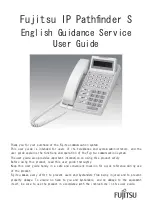
U.S. FDA
136
Ben
Q
2006, Z:\SL
91_ONYX\ou
tput
\FUG\ON
YX_FCC_am_060911_t
e\FM\
STD_FDA
_
FCC_am.fm
left page (136)
of ONYX SL91 FCC am, (11.09.2006, 11:58)
Te
m
p
lat
e: Minion
, 140x105 mm, Ve
rsi
o
n 2.0;
VAR Language: am;
VAR issue
date: 060711
U.S. FDA
The U.S. Food and Drug
Administration's (FDA) Center
for Devices and Radiological
Health Consumer Update on
Mobile Phones
FDA has been receiving inquiries about
the safety of mobile phones, including
cellular phones and PCS phones. The
following summarizes what is know –
and what remains unknown – about
whether these products can pose a
hazard to health, and what can be done
to minimize any potential risk. This
information may be used to respond to
questions.
Why the concern?
Mobile phones emit low levels of radio
frequency energy (i.e., radio frequency
radiation) in the microwave range while
being used. They also emit very low
levels of radio frequency energy (RF),
considered non-significant, when in the
stand-by mode. It is well known that
high levels of RF can produce biological
damage through heating effects (this is
how your microwave oven is able to
cook food). However, it is not known
whether, to what extent, or through
what mechanism, lower levels of RF
might cause adverse health effects as
well. Although some research has been
done to address these questions, no
clear picture of the biological effects of
this type of radiation has emerged to
date. Thus, the available science does
not allow us to conclude that mobile
phones are absolutely safe, or that they
are unsafe. However, the available
scientific evidence does not
demonstrate adverse health effects
associated with the use of mobile
phones.
What kinds of phones are in question?
Questions have been raised about hand-
held mobile phones, the kind that have a
built-in antenna that is positioned close
to the user's head during normal
telephone conversation. These types of
mobile phones are of concern because of
the short distance between the phone's
antenna – the primary source of the RF
– and the person's head. The exposure to
RF from mobile phones in which the
antenna is located at greater distances
from the user (on the outside of a car,
for example) is drastically lower than
that from hand-held phones, because a
person's RF exposure decreases rapidly
with distance from the source. The
safety of so-called “cordless phones,”
which have a base unit connected to the
telephone wiring in a house and which
operate at far lower power levels and
frequencies, has not been questioned.
















































